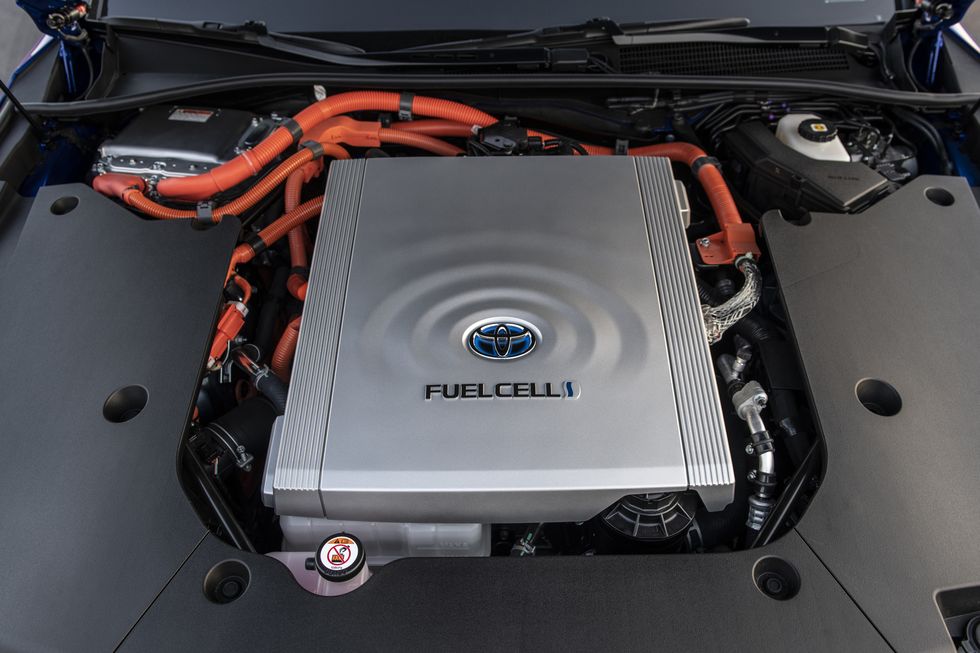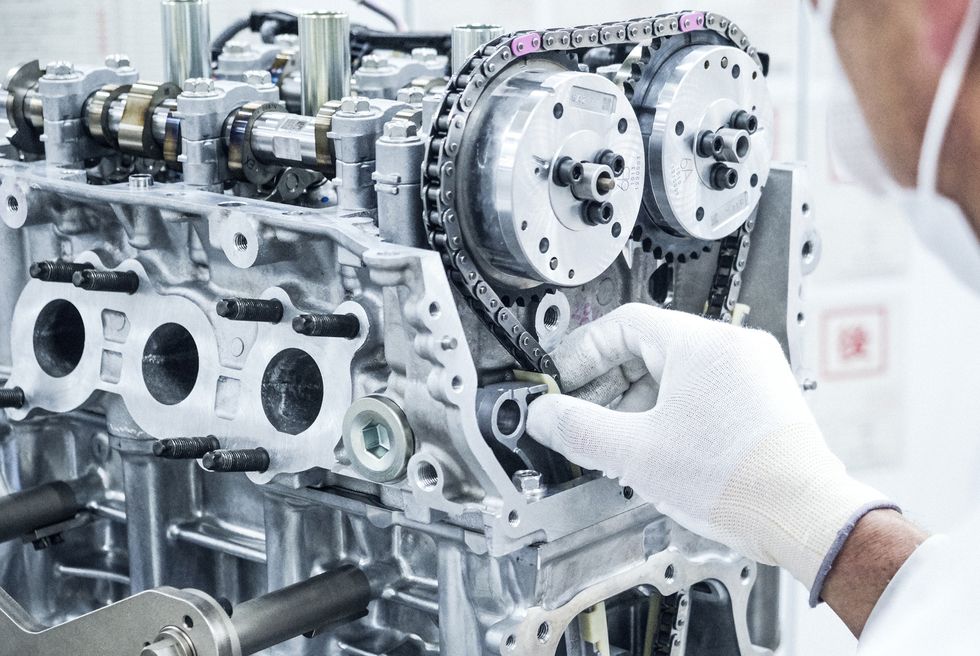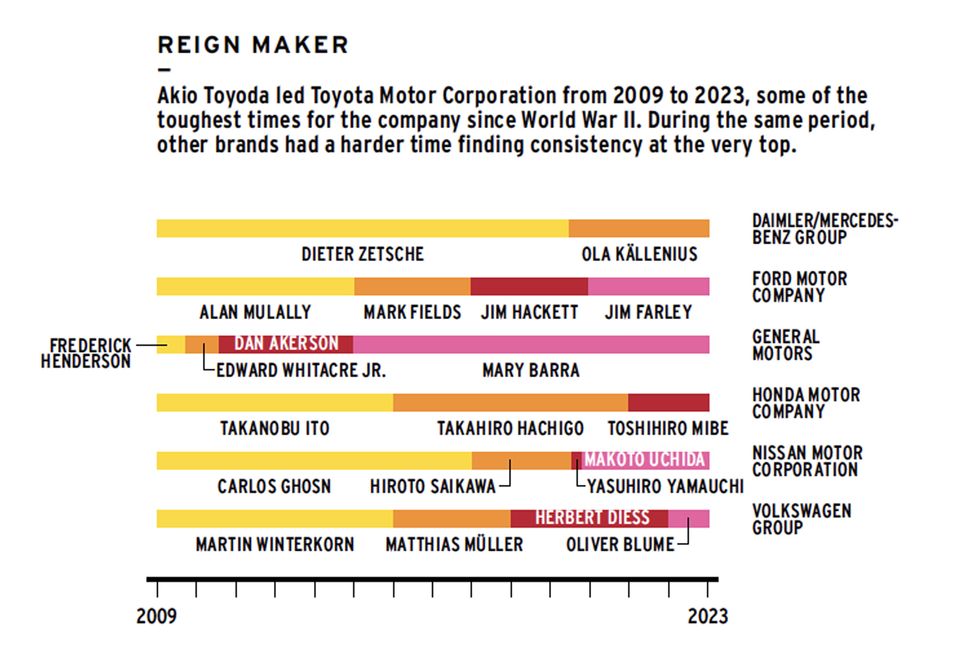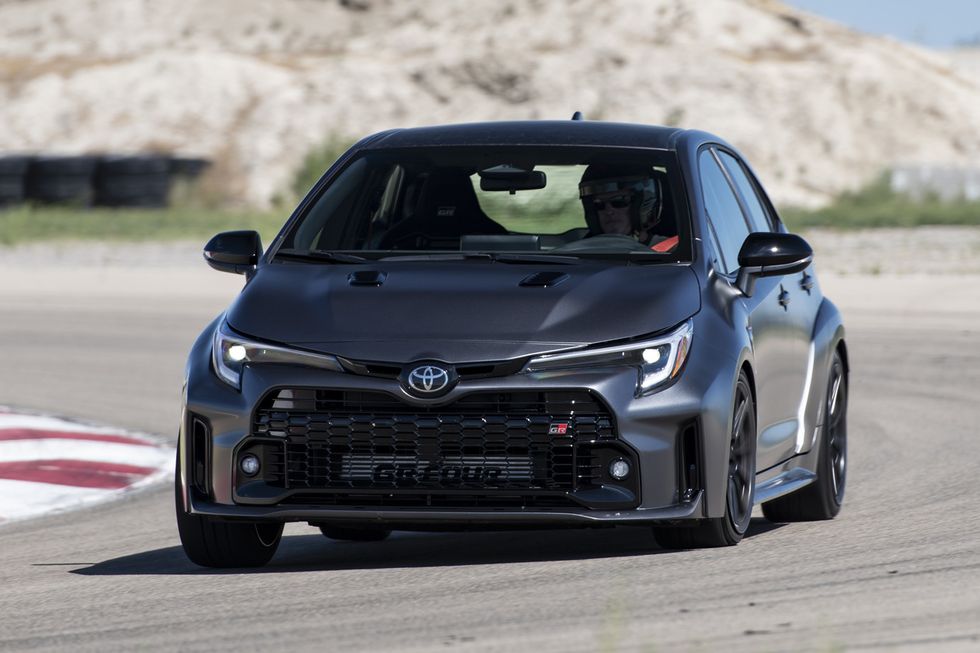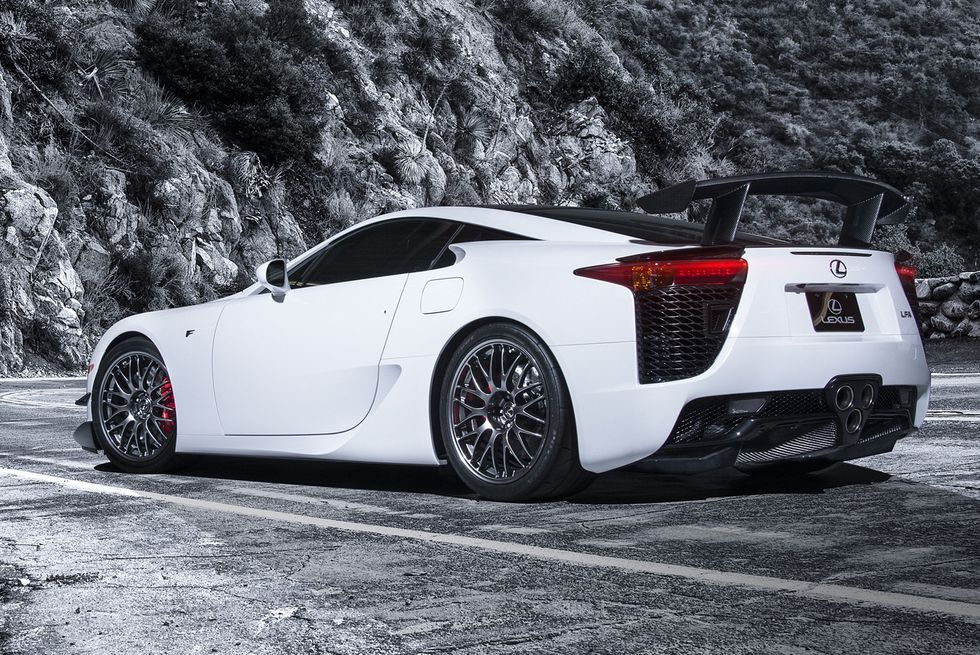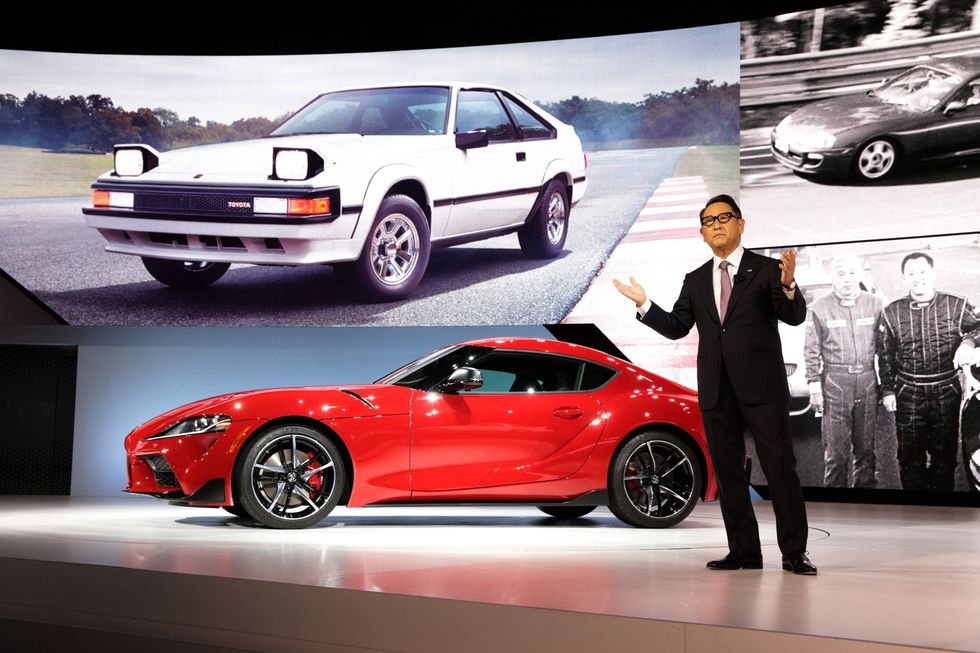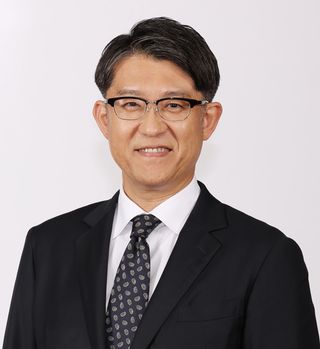From the May 2023 Issue of Car and Driver.
When Akio Toyoda took the reins as president of Toyota Motor Corporation in 2009, the company was not in a good place. Yes, it led global auto production with 7.2 million units, ahead of GM’s 6.5 mil. But Toyota, reeling from the global recession, had just reported its first financial loss in decades and was deep in the throes of its unintended-acceleration controversy, which would result in a $1.2 billion fine in the U.S. Then things got worse. In 2011, the Tōhoku earthquake and tsunami devastated the east coast of Japan, destroying or damaging three of Toyota’s factories and knocking many suppliers offline.
Touring the devastation soon after, Toyoda said it “totally dwarfed” every other challenge he’d yet faced. Toyota’s production stumbled that year, with the company falling to number three. But by the next year, production figures were back on top.
Toyota offers just one EV in the global market, the bZ4X. It still expects to make cars powered by internal combustion through 2050 and argues that using a 100.0-kWh battery to make six plug-in hybrids or 90 hybrids instead of one EV results in a greater reduction of carbon dioxide.
Today Toyota outsells next-largest automaker Volkswagen by roughly 2 million vehicles annually. As of this writing, it’s also the second-most-valuable car company in the world, behind Tesla.
Toyota
Toyota
Along with bringing Toyota through an earthquake and global financial peril, Toyoda also won over enthusiasts, racing under his alter ego, Morizo, and spearheading performance cars ranging from the Lexus LFA to the new GR Corolla. While we’ll never complain about more performance hot hatches, some pundits fear that Koji Sato will be stuck playing catch-up when it comes to EVs.
Car and Driver
While most global manufacturers are throwing their weight behind battery-electric vehicles in preparation for looming zero-emission mandates in markets such as California and New York, Toyota offers just one EV in the global market, the bZ4X (Lexus is introducing a companion model, the RZ450e). Instead, Toyota has been taking a more measured approach to electrification, relying on hybrids and plug-in hybrids. It argues that using a 100.0-kWh battery to make six plug-in hybrids or 90 hybrids instead of one EV results in a greater reduction of carbon dioxide. Toyota still expects to make cars powered by internal combustion through 2050, although with fleet emissions down 90 percent.
Under Toyoda’s leadership, we saw playful performance offerings like the 2023 Toyota GR Corolla and the 2012 Lexus LFA.
ToyotaToyota
Toyota, under Toyoda’s leadership, has also been investing in hydrogen fuel-cell technology. Toyoda even raced a Yaris that used hydrogen combustion. “Carbon neutrality is not about one having a single choice but about keeping options open,” he’s said. But without government backing for hydrogen vehicles in the U.S., it’s hard to see fuel cells being much of an option here.
The need for an electrification strategy may be part of why Koji Sato has been tapped as Toyoda’s successor. Coming from the presidency at Lexus, Sato has experience with EV planning. The Lexus Electrified initiative promises that by 2030, every Lexus sold in North America, Europe, and China will be battery-electric.
As Sato steps up, is it too late for Toyota to meet anticipated EV demand? No way, Brian Finkelmeyer, senior director of new car solutions at Cox Automotive, tells us: “I think Toyota has played this perfectly.”
Finkelmeyer says no mainstream manufacturers have proven EVs as their sole business aside from Tesla, which operates in the rarefied air of smaller-scale luxury brands. “Toyota is still hedging its bets a little bit, not putting all the chips in one place,” Finkelmeyer says. And it isn’t just fuel cells. Finkelmeyer points out that Toyota is the global leader in patents involving solid-state batteries, which have the potential to increase range and decrease charging time. This, he believes, could leave Toyota well positioned long term.
How much of an impact will Sato make in changing Toyota’s fortunes? Finkelmeyer says it won’t be dramatic. “My impression of Toyota is of a fundamental, cultural set of beliefs about how they go to market and who they are,” he says. “They’re like the [NBA’s] Golden State Warriors. They’re just going to keep doing what they’re doing.”
Toyota
Initial statements by Sato seem to back that up. “Cars are made with the passion and efforts of countless individuals,” Sato said earlier this year at a press conference where he expressed his vision for Toyota. “I want to be a president who remains part of that group, toiling together to create cars.”
What about Toyoda’s passion for sports cars? “If Morizo is someone who loves driving cars,” Sato said, “I am someone who loves making cars that make drivers smile.” Hopefully, that means the brand’s affordable, fun performance vehicles will continue, with or without tailpipes.
Get To Know Sato
Toyota
Born in Tokyo in 1969, Koji Sato studied mechanical engineering in college. His interest was always in cars, and he worked part time at a gas station and later at Fuji Speedway.
Sato joined Toyota as an engineer in 1992. His early work was in suspension development and chassis design, including contributions to the first-generation Prius. He later moved to product planning, where he led the team for the Toyota Camry and Lexus GS before taking on the position of chief engineer at Lexus, where he oversaw the development of today’s Lexus LC coupe—still one of his favorite cars. He became president of Lexus in 2020, shortly before also taking on the role of Gazoo Racing president.
When he isn’t working on designing new cars, Sato enjoys his favorite classic, the last of the rear-drive Corollas, the AE86.

